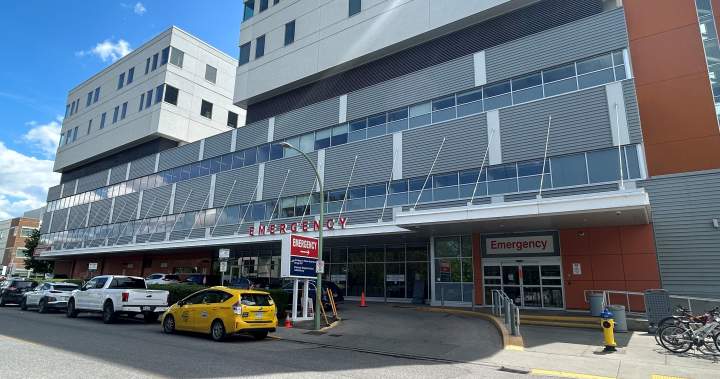In the busy waiting room of Surrey Memorial Hospital, Alina Vasquez shifts uncomfortably in her plastic chair. It’s been six hours since she checked in with severe abdominal pain. The digital display board showing wait times hasn’t changed in over an hour.
“I’m considering just going home,” she whispers, clutching her side. “But what if it’s something serious?”
Vasquez isn’t alone in her dilemma. According to data recently obtained through Freedom of Information requests, over 211,000 patients walked out of British Columbia emergency rooms without receiving treatment in 2023 – representing nearly 8% of all ER visits across the province.
The numbers paint a troubling picture of a healthcare system under extraordinary strain. At Surrey Memorial, which has one of the busiest emergency departments in Western Canada, approximately 17,400 patients left without being seen by a physician last year – more than 47 people per day.
“What we’re seeing is the collapse of timely access,” says Dr. Michael Klein, an emergency physician who has worked in BC hospitals for over 15 years. “When people leave without treatment, they often return later with more advanced conditions that require more intensive care. It’s a vicious cycle that strains the system even further.”
At Vancouver General Hospital, average wait times for non-urgent cases have climbed to over 4 hours in 2024, with some patients reporting waits of 8-12 hours before receiving treatment. The situation appears even more dire in suburban and rural communities where staffing shortages have hit hardest.
Walking through the Fraser Valley Medical Centre last month, I observed first-hand the hallway medicine that has become normalized: patients on stretchers lining corridors, nurses juggling multiple critical cases, and visibly exhausted physicians trying to maintain a semblance of order amid the chaos.
“We’re making impossible choices every day about who gets seen first,” explains Samantha Wong, a registered nurse at Royal Columbian Hospital. “The patients who leave – they’re often in real pain, but they have responsibilities, children to pick up, jobs they can’t miss. It’s heartbreaking to watch.”
The crisis reflects broader challenges facing Canada’s healthcare system. Statistics Canada data shows emergency department visits increased by 12% nationwide between 2019 and 2023, while the number of emergency physicians grew by only 2.8% during the same period.
In BC specifically, population growth and an aging demographic have intensified pressures. The province has seen approximately 450,000 new residents in the past five years, according to BC Stats, without proportional expansion of healthcare infrastructure.
For Indigenous communities, the situation compounds existing barriers to healthcare access. A 2023 report from the First Nations Health Authority found that First Nations individuals in BC wait on average 1.8 times longer than non-Indigenous patients when visiting emergency departments.
“When wait times are this excessive, it disproportionately impacts those already facing systemic barriers,” says Teresa Williams, an Indigenous health advocate from the Cowichan Tribes. “Many community members tell me they avoid seeking emergency care altogether, knowing they might wait all day only to leave without being treated.”
Health Minister Adrian Dix has acknowledged the crisis, announcing in March a $145 million investment to reduce emergency department wait times. The plan includes hiring additional staff, expanding urgent care centers, and implementing new triage protocols.
“This funding represents a step forward, but addressing the root causes requires structural change,” says health policy researcher Dr. Emily Hutcheon from the University of British Columbia. “We need to strengthen primary care so fewer people end up in emergency departments for conditions that could be managed elsewhere.”
Some hospitals have begun implementing innovative approaches to manage the backlog. Victoria General Hospital launched a “fast-track” system in early 2024 that separates patients with minor injuries and illnesses into a dedicated treatment area. The program has reportedly reduced walk-away rates by 23% in its first three months.
Digital solutions are also being tested. Vancouver Coastal Health introduced a virtual queuing system at four hospitals that allows some patients to wait at home until closer to their expected treatment time. Initial data suggests modest improvements in patient satisfaction, though overall wait times remain largely unchanged.
For patients like Marcus Chen, who spent 9 hours at Burnaby Hospital before receiving treatment for a broken wrist, these initiatives feel insufficient. “They kept telling me ‘just a little longer,’ but minutes turned into hours,” he recalls. “I almost left multiple times. Not everyone has the luxury to wait that long.”
Healthcare workers emphasize that the current situation is unsustainable. A recent survey by the BC Nurses’ Union found that 71% of emergency department nurses have considered leaving the profession due to unsustainable workloads and moral distress from being unable to provide timely care.
As morning light filters through the windows at Surrey Memorial, Alina Vasquez finally hears her name called – nearly 8 hours after arrival. Later, she learns she has appendicitis requiring immediate surgery.
“I was minutes away from walking out,” she says from her hospital bed the next day. “I keep thinking about what might have happened if I had.”
Her story highlights the human cost behind the statistics – and the urgent need for solutions to British Columbia’s emergency room crisis before more patients feel forced to make the dangerous choice between endless waiting and walking away.






